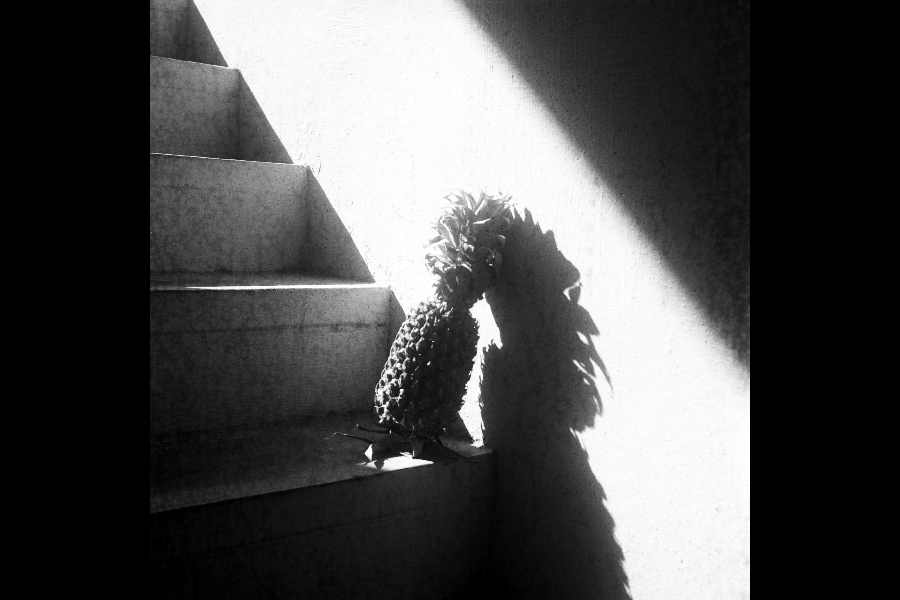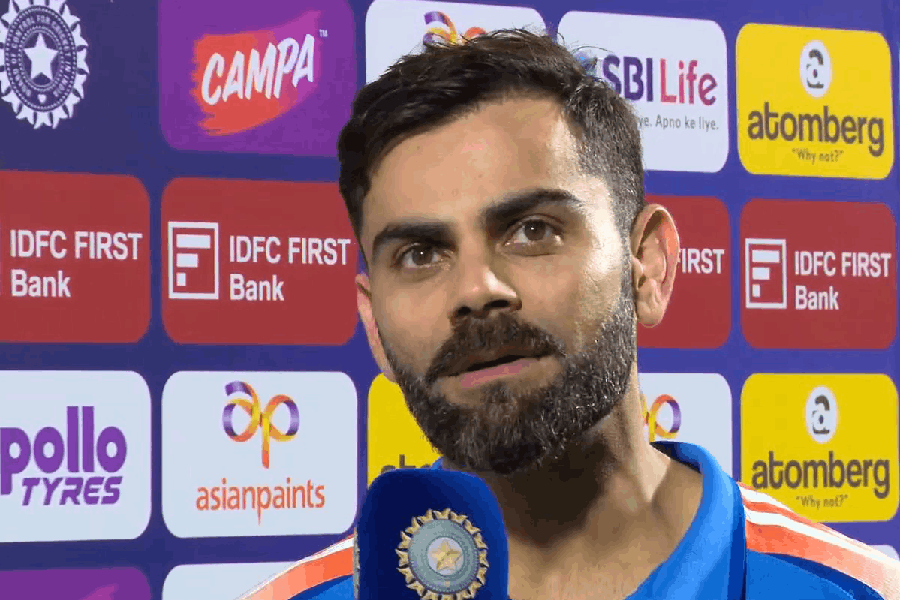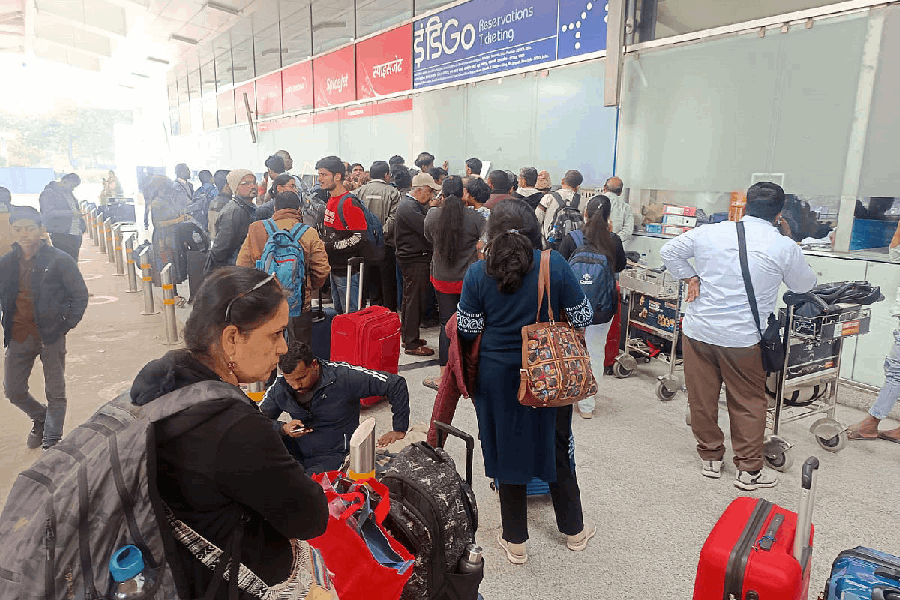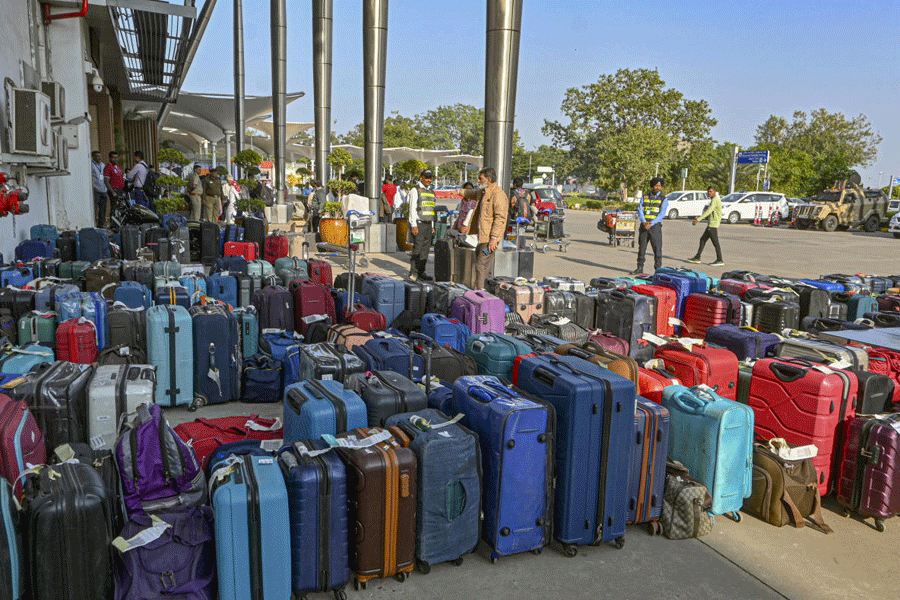Each artist is seen and assessed through various lenses — those of the lay viewer, the curator and the collector, for instance. But what does one artist see when he/she looks at the works of a fellow artist? What does such a seeing inspire in her? These are some of the questions that the ongoing show, Artists for Artists, at Experimenter Ballygunge Place and Hindustan Road tries to answer. Part of the show are four solos by four artists who have been selected by three other artists — the works of Aishwarya Arumbakkam and Sathish Kumar have been curated by Sohrab Hura; those of Rupali Patil have been singled out by Rathin Barman and Rai’s artworks have been picked out by Bhasha Chakrabarti.
Of these, the simplest and yet the most moving body of work is perhaps Ten sounds I cannot hear by Arumbakkam. She works with thin, diaphanous material, projecting or printing photographs of her parents onto them. The dominating piece is a video of her mother looking — half-turned — at the camera and simply breathing (picture, left). This is projected onto a large sheet that sways with the wind and is accompanied by a sound clip of her mother’s breath. It has a meditative impact and one almost feels like one is embodying the artist and sensing her closeness with her mother. Another video, this one a hand-drawn animation of Arumbakkam’s father walking, is as contemplative with the slow, repetitive motions of the father’s walk timed to the ticking of a metronome. Arumbakkam’s use of gampi — a kind of Japanese washi paper — which roughly translates to goose skin and the intaglio printing method which infuses the ink right into this skin make her works come alive.
Displayed alongside her is Sathish Kumar’s dialogue with Sunlight. Kumar’s black and white photographs capture the life-giving force of the sun turning everyday places — the terrace, a door, a staircase — and objects — a swing, a pigeon, a tree — into ethereal, other-worldly spaces and presences. Kumar began this project during the Covid-19 pandemic when the lockdown forced him to seek out the magical in his mundane life. The light of the sun — a photographer’s closest ally — came to him like a ray of hope, shining a light on enchanting photo opportunities within his reach.
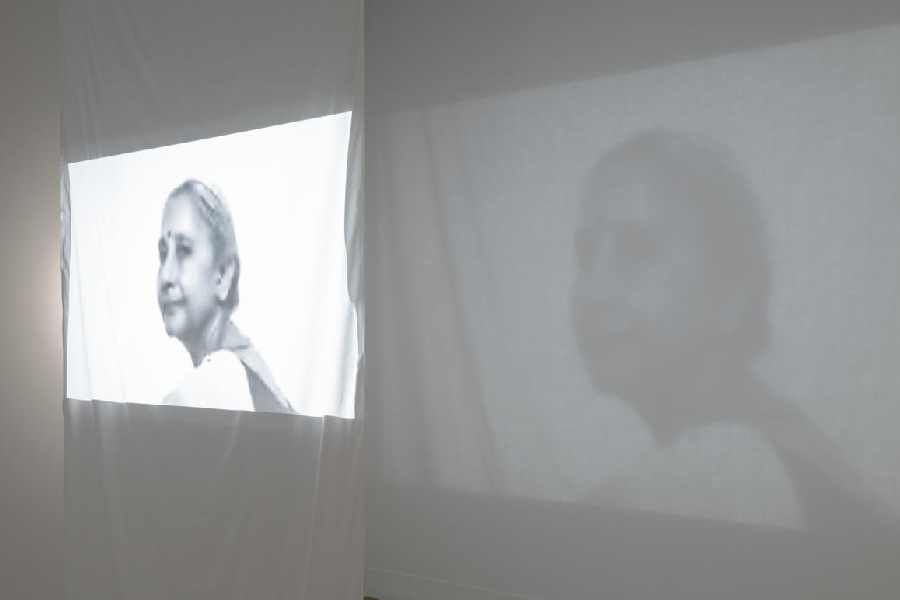
Tens sounds I cannot hear Courtesy: Aishwarya Arumbakkam - Experimenter Gallery
Rupali Patil and Rai were exhibited at Ballygunge Place and Hindustan Road, respectively, and, at first glance, the overlaps in their works would not be obvious. Yet
both artists explore the impacts of urbanisation, industry and development. For Patil, the worst sufferers of these so-called progressive phenomena are women and their bodies. Parts of women’s bodies — especially the breasts and the uterus — thus become the unseen and uncared-for bricks on which civilisation is built. The toiling uterus nourishes not only future humans but also the soil, yet the right to the land
and the nourishment it offers elude the bearers of this organ. Rai, on the other hand, turns to the changing coastal landscape, the disappearing wetlands, and the wounds that these are leaving on communities that depend on this ecosystem. Her panoramic Crater — II reveals the lacerations that scar a serene landscape painted in the soothing greens of the Arabian Sea.

